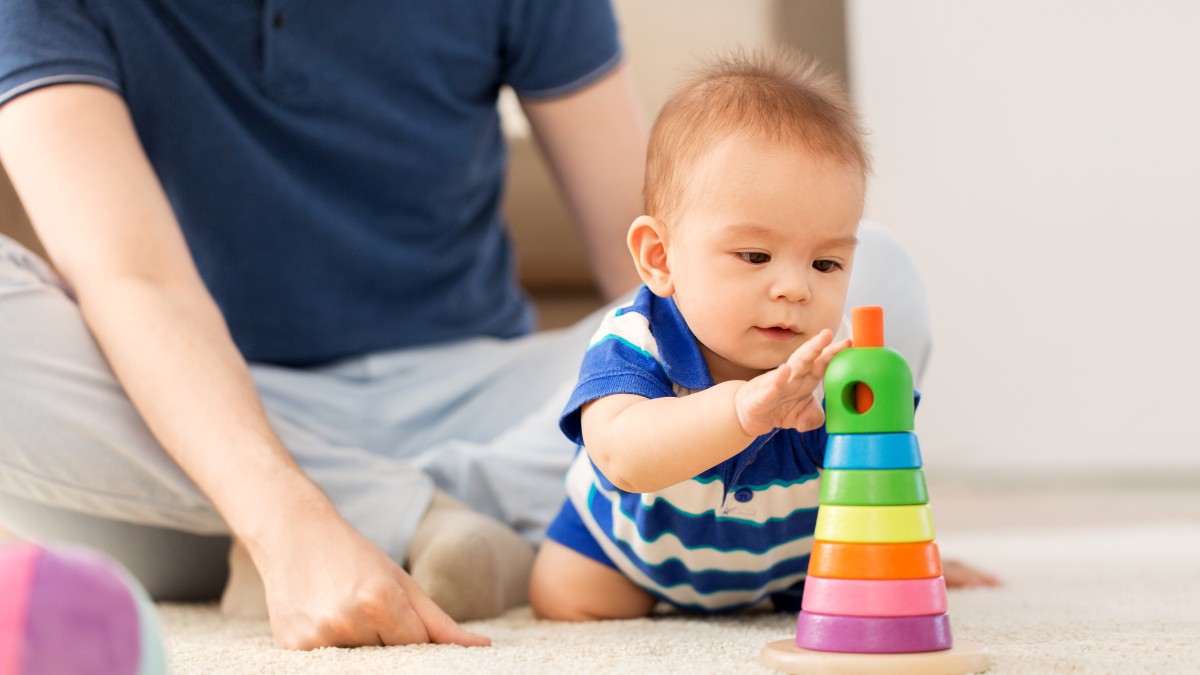How Play-Based ABA Therapy Builds Skills Through Fun and Connection
Discover how play-based ABA therapy turns fun into functional learning for children with autism. Learn strategies, benefits, and how to apply them at home.
October 7, 2025
Key Points:
- Play-based ABA therapy helps children with autism learn essential life and social skills through engaging, natural play.
- Structured play activities like role play, functional play, and social games promote language, emotional regulation, and independence.
- Parents can integrate play-based learning at home to reinforce therapy goals and strengthen connections.
For many parents, ABA therapy can sound structured and clinical. But play-based ABA therapy offers something refreshingly different - learning through joy. This approach combines evidence-based ABA principles with natural, play-driven interactions.
Instead of drills or worksheets, children learn through activities that feel familiar and fun: building blocks, pretending to cook, or role-playing with dolls. These moments are opportunities for therapists to teach communication, social interaction, emotional regulation, and problem-solving skills that extend far beyond the therapy room.
According to the Centers for Disease Control and Prevention (CDC), 1 in 31 children in the U.S. is diagnosed with autism spectrum disorder (ASD). Many of these children struggle with play skills, communication, and social connection. Play-based ABA therapy bridges that gap by transforming playtime into a structured, individualized learning experience.
Why Play Is Essential for Learning
Play is how children make sense of the world. For children with autism, however, play may not come naturally. They might prefer repetitive play, have difficulty sharing attention, or struggle to use toys creatively.
Play-based ABA therapy targets these challenges directly. Through guided play, therapists model and reinforce new behaviors, gradually helping children engage more meaningfully.
When play becomes purposeful, children:
- Develop social awareness and joint attention
- Practice turn-taking and sharing
- Strengthen language and communication skills
- Learn emotional regulation and problem-solving
By embedding learning goals in play, therapists make therapy feel less like work and more like connection.
.jpg)
How Play-Based ABA Therapy Works
In play-based ABA, therapists use each child’s natural interests to create teaching opportunities. This approach, often called “natural environment teaching” (NET), allows children to learn through activities they already enjoy.
Here’s a look at how it’s structured:
- Observation: The therapist watches how the child engages with toys or peers to identify what motivates them.
- Goal Setting: Targets are created based on developmental milestones—such as imitation, requesting help, or engaging in pretend play.
- Modeling and Prompting: The therapist models desired behaviors during play, prompting the child to imitate or respond appropriately.
- Reinforcement: Positive feedback or rewards (like praise or a favorite toy) encourage repetition of desired behaviors.
For example, if a child loves cars, the therapist might build a “race” to practice turn-taking or counting. Through ABA play therapy, fun and learning merge seamlessly.
Building Play Skills Through ABA
Developing play skills in ABA means more than just having fun. It’s about building functional abilities. Play skills ABA sessions are designed to teach different levels of play:
- Exploratory play: Learning how objects work (rolling a ball, stacking blocks)
- Functional play: Using items correctly, like feeding a doll or driving toy cars
- Symbolic play: Pretending, storytelling, and imagination
- Social play: Playing with others, sharing, and cooperating
Functional play ABA targets daily living and problem-solving skills through play. For example, a cooking activity can teach sequencing (“first pour, then stir”), fine motor coordination, and communication (“Can you pass the spoon?”).
As children master one play skill, therapists gradually introduce more complex, socially rich scenarios, often through role play ABA.
Role Play ABA: Learning Through Imitation and Imagination
Role-playing is a core component of ABA play therapy because it helps children practice real-world skills in a safe, structured environment. Through role play ABA sessions, children can rehearse social interactions such as:
- Ordering food at a restaurant
- Taking turns as a doctor and patient
- Shopping at a pretend store
- Asking for help or offering to share
Role play allows children to experiment with language, emotions, and problem-solving while receiving immediate feedback. Over time, these rehearsed interactions translate into genuine social competence in everyday life.
Making ABA Play Therapy Fun and Effective
For play-based therapy for autism to work, it must strike the right balance between structure and freedom. Too much control limits creativity; too little structure dilutes learning.
Here are strategies therapists and parents can use:
- Follow the child’s lead: Let their interests guide the activity to maintain engagement.
- Use natural reinforcement: Reward behaviors with meaningful outcomes (e.g., “You said ‘ball,’ so you get the ball!”).
- Embed goals naturally: Turn every play opportunity into a chance to learn—label colors while painting, practice requests during snack time, or count toys while cleaning up.
- Model flexibility: Show children that play can change and evolve. For example, a block tower can become a garage or a castle.
By keeping the sessions dynamic and enjoyable, children learn more willingly and retain new skills longer.
How Parents Can Support Play-Based ABA at Home
Parents play a crucial role in reinforcing what children learn during therapy. Here’s how caregivers can help extend the benefits of ABA play therapy beyond sessions:
- Create a play-rich environment: Offer a mix of toys that encourage pretend, cooperative, and constructive play.
- Join their world: Sit on the floor, follow their lead, and mirror their actions to build connection.
- Narrate and expand: Use language to describe what’s happening (“You’re feeding the bear! He must be hungry.”).
- Encourage social play: Arrange short playdates with patient peers or siblings.
- Celebrate progress: Every small success, like sharing a toy or making eye contact, is worth acknowledging.
These moments reinforce therapy goals and deepen your relationship with your child.
The Science Behind Play and ABA
Numerous studies support the effectiveness of combining play and ABA techniques. Naturalistic and play-based ABA interventions are found to improve social communication and adaptive behaviors more effectively than traditional, table-based methods.
This approach aligns with the developmental needs of children with autism, teaching in the environments and activities where skills will actually be used.
.jpg)
Beyond the Therapy Room: Building Confidence Through Play
One of the most rewarding outcomes of play-based ABA is confidence. As children begin to initiate play, express themselves, and connect with others, their independence grows.
Parents often notice improvements in areas like daily routines, sibling interactions, and emotional expression. Over time, what began as guided play becomes natural communication and self-expression.
Bringing It All Together
Play-based ABA therapy transforms the way children with autism learn. By embedding structured learning within natural, joyful play, it bridges the gap between therapy and real life. Children aren’t just learning, they’re experiencing, connecting, and thriving through play.
This approach nurtures the essential skills that support independence: communication, flexibility, and social understanding. When therapy feels like play, children engage more deeply and learn more effectively.
Help your child learn through play with expert ABA therapy in Indiana, North Carolina, and Kansas.
At Astra ABA, we use play-based ABA therapy to turn everyday moments into meaningful learning opportunities. Our therapists meet children where they are, using natural play, role play, and functional activities to build lifelong skills.
If you’re looking for compassionate, evidence-based ABA therapy in Indiana, ABA therapy in North Carolina, or ABA therapy in Kansas, our team at Astra ABA is here to help your child grow with confidence and joy.
Contact us today to learn how play can open the door to progress.
Related Content
Liked this article? Check out these related posts to learn even more!






Ready to start your journey with ASTRA ABA?
Contact us today for a consultation and let us be a part of your child's path to success.
Get In Touch










%20(1).jpg)


